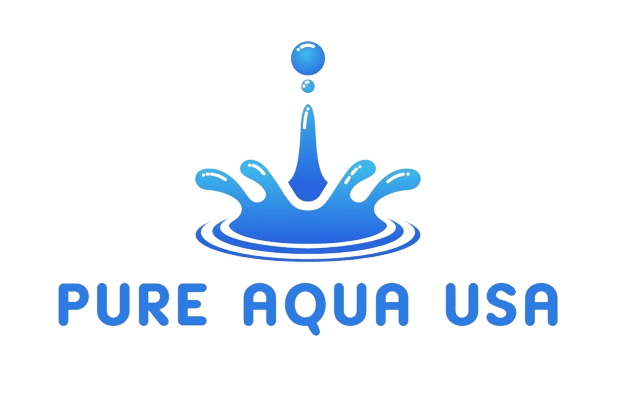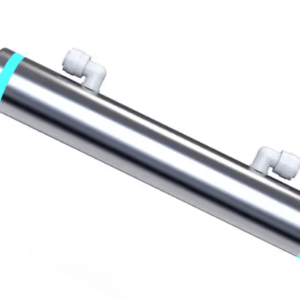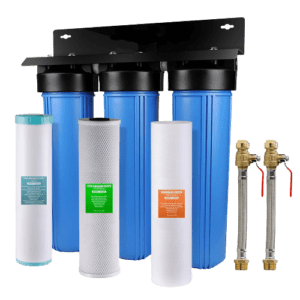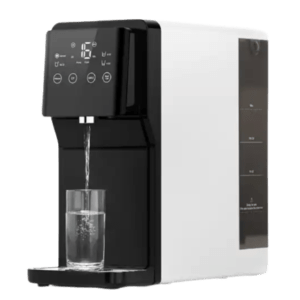Your cart is currently empty!

Sediment Water Filters
Whole-home water filtration involves installing a comprehensive filtration system at the main water supply line of a residence. This system effectively removes sediment, chlorine, organic compounds, and other impurities, ensuring that all water entering the home is clean and safe for various uses such as drinking, cooking, bathing, and laundry. It provides a convenient and reliable solution for maintaining high water quality throughout the entire household.
Applied Membranes sediment depth filters protect appliances, plumbing, fixtures, and equipment from damage due to sediment buildup & clogging. Made from pure melt-blown polypropylene, sediment filter cartridges are suitable for food & beverage contact and pharmaceutical applications.
- Description
- Additional information
- Specifications
- Comparing Sediment Filters
- Installation Instructions
- Replacement Filters
- Maintenance
- Q&A
- Advantages and Disadvantages
- Applications
- Downloads
- Drawings
- Reviews (0)
Description
Sediment water filters are designed to remove suspended particles from water. These particles can include sand, silt, rust, and other debris. The filters typically use physical filtration to strain out these particles as the water flows through them. Sediment water filters can be made from various materials such as pleated polyesters, cellulose fibers, or porous ceramic. These filters are often used as pre-filters in multi-stage filtration systems to prevent larger particles from clogging or damaging more sensitive filters downstream.All Products
There are different types of sediment water filters, including:
- Cartridge Filters: These are commonly used in residential and commercial water filtration systems. They are cylindrical and can be made of various materials, including spun polypropylene, string, or pleated polyester.
- Backwash Filters: These filters are designed to periodically flush out accumulated sediment by reversing the flow of water, which helps to extend the life of the filter.
- Depth Filters: These filters have a greater depth and density of materials, allowing them to capture smaller particles over a larger surface area.
They are an important part of water treatment systems, as they can help improve water quality and protect downstream equipment from damage. They are often used in conjunction with other types of filters, such as activated carbon filters, to provide comprehensive water filtration. Sediment water filters can effectively remove visible particles from water, such as dirt, sand, and rust, as well as other impurities. They are typically rated based on their micron size, which refers to the size of particles they can effectively filter out. For example, a 5-micron sediment filter is capable of trapping particles as small as 5 micrometers.
These filters are relatively affordable and are relatively easy to install and maintain. They’re often used as a first line of defense in water treatment systems, particularly in areas where the water supply may be prone to sediment contamination. Sediment water filters can be used in various settings, including homes, businesses, and industrial facilities. In residential settings, they are commonly integrated into point-of-use or whole-house water filtration systems. In industrial applications, these filters are used as part of larger-scale water treatment processes to ensure that water used in manufacturing processes or cooling systems is free from particulate matter.
It’s important to note that while sediment water filters can effectively remove visible particles, they may not be as effective at removing dissolved impurities such as chemicals and heavy metals. For comprehensive water treatment, a combination of different types of filters and purification methods may be necessary. Regular maintenance, including periodic replacement of filter cartridges, is essential to ensure the continued effectiveness of water filters. This helps prevent clogging and ensures that the filters can perform optimally. Overall, sediment water filters play a crucial role in improving water quality by removing physical impurities, which makes water safer and more pleasant to use and consume.
Other Filters you may need:
Additional information
| Dimensions | 20 × 8 × 8 in |
|---|---|
| Size | 2-1/2" x 20", 4-1/2" x 10", 4-1/2" x 20" |
| Type | Blown Polypropylene, String Wound Sediment Filters, Pleated Cellulose Poly Sediment Filters |
| Micron | 1, 5, 10, 20, 50, 100 |
Specifications
Comparing Sediment Filters
Polypropylene, string wound, and pleated cellulose sediment filters differ in their composition and structure, which affects their filtration capabilities and lifespans.
Polypropylene sediment filters are constructed using thermally bonded polypropylene fibers. They are effective at removing sediment, silt, and sand from water. They offer good chemical resistance and are suitable for a wide range of applications. They are commonly used as pre-filters in water treatment systems.
String wound sediment filters are made by winding string-like materials, such as cotton, polypropylene, or fiberglass, around a core. These filters are effective at capturing larger particles and are durable, but they may have a lower flow rate compared to other types.
Pleated cellulose poly sediment filters are made by pleating a cellulose-based filter media, often combined with polypropylene for added strength. These filters offer a larger surface area for filtration, allowing them to capture finer particles while maintaining a relatively high flow rate. They are often used in applications where higher efficiency is required.
Each type of sediment filter has its advantages and is suitable for different water filtration needs based on factors such as particle size, flow rate, durability, and the specific requirements of the water source.
Installation Instructions
Here are general installation instructions for a common types of water treatment filter, an under-sink carbon water filtration system:
- Gather Materials and Tools:
- Ensure you have the necessary materials, including the carbon water filtration system, tubing, fittings, and mounting hardware. You’ll also need basic tools such as a wrench, screwdriver, and tubing cutter.
- Choose an Installation Location:
- Select a suitable location under the sink or in a nearby cabinet for installing the water filtration system. Ensure there is adequate space for the filter housing, access to the water supply line, and a nearby power outlet if the system includes a pump or UV sterilizer.
- Shut Off Water Supply:
- Turn off the cold water supply to the sink by closing the shut-off valve located under the sink or at the main water supply line.
- Install the Filter Bracket:
- Mount the filter bracket securely to the chosen location using appropriate screws and anchors if needed. Ensure the bracket is level and stable to support the weight of the filtration system.
- Connect the Water Supply:
- Install the T-fitting onto the cold water supply line. Cut the tubing to the appropriate length, connect it to the T-fitting, and route it to the inlet of the filtration system. Use compression fittings or quick-connect fittings to ensure a secure connection.
- Connect the Filtered Water Outlet:
- Connect another section of tubing to the filtered water outlet of the filtration system, routing it to the cold water faucet. Use a saddle valve or saddle tee to tap into the existing water line, and secure the tubing in place.
- Install the Filter Cartridge:
- Follow the manufacturer’s instructions to insert the filter cartridge into the housing, and ensure it is properly seated and sealed according to the provided guidelines.
- Test for Leaks:
- Once all connections are made, turn on the water supply and check for any leaks at the connections and filter housing. Tighten fittings if necessary to eliminate any leaks.
- Flush the System:
- Flush the system according to the manufacturer’s recommendations to remove any air bubbles, carbon fines, or impurities from the filter cartridge. This may involve running water through the system for a specified period or volume.
- Verify System Operation:
- Test the system by running the cold water faucet and verifying that filtered water is being dispensed. Check for any signs of leaks and ensure the system is operating as intended.
It’s important to note that these instructions are general in nature and may need to be adjusted based on the specific model and type of water treatment filter being installed. Always refer to the manufacturer’s installation manual for detailed guidelines and safety precautions.
Replacement Filters
When it comes to replacement filters for whole-house water filtration systems, there are a few key points to consider. Here’s a comprehensive guide to help you understand the important aspects of replacement filters:
Compatibility and Sizing
It’s essential to ensure that the replacement filters are compatible with your specific whole-house water filtration system. This includes checking the model number, filter size, and any specific requirements outlined by the manufacturer. Proper sizing and compatibility will ensure that the replacement filters function effectively within your system.
Filtration Capacity and Efficiency
Consider the filtration capacity and efficiency of the replacement filters. Different filters are designed to target specific contaminants such as sediment, chlorine, heavy metals, or organic compounds. Understanding the water quality in your area and your specific filtration needs will help you select replacement filters that effectively address those concerns.
Filter Longevity and Maintenance
Evaluate the expected longevity of the replacement filters and the recommended maintenance schedule. This includes understanding the average lifespan of the filters, the frequency of filter changes, and any maintenance procedures required to optimize their performance. Some systems may have multiple stages of filtration, each with its replacement schedule.
Quality and Certification
Look for replacement filters that are manufactured to high-quality standards and carry relevant certifications. Examples of certifications to look for include NSF/ANSI standards for contaminant reduction or the Water Quality Association (WQA) certification. These certifications indicate that the replacement filters have been independently tested and verified for their performance.
Ease of Replacement
Consider the ease of replacing the filters within your whole house water filtration system. User-friendly replacement processes and clear instructions can make maintenance simpler and more convenient, ensuring that filter changes can be carried out efficiently.
Cost and Value
Evaluate the cost of the replacement filters about their quality, longevity, and filtration performance. While it’s important to consider the upfront cost, it’s equally important to factor in the long-term value provided by the filters in terms of water quality improvement and system protection.
By considering these key points, you can select replacement filters for your whole house water filtration system that align with your water quality goals and system requirements.
Micron Rating and Filter Media
Understanding the micron rating and filter media used in replacement filters is crucial. The micron rating indicates the size of particles the filter can effectively remove. Additionally, different filter media, such as activated carbon, sediment filters, or catalytic carbon, serve specific purposes in targeting various contaminants. Selecting filters with appropriate micron ratings and filter media ensures comprehensive water purification.
Water Flow Rate
Take into account the water flow rate supported by the replacement filters. It’s important to choose filters that allow for adequate water flow throughout your household while still providing effective filtration. Optimizing the flow rate ensures consistent water pressure and efficient filtration performance.
Environmental Impact and Sustainability
Consider the environmental impact of the replacement filters. Look for eco-friendly options that minimize plastic waste and are recyclable. Sustainable filter choices contribute to reducing the overall environmental footprint of your water filtration system.
Purchase and Delivery Options
Explore the availability of replacement filters and the convenience of purchasing them. Check whether the filters are readily available from trusted suppliers and whether flexible delivery options or subscriptions are offered to ensure you have a consistent supply on hand when replacements are needed.
Customer Reviews and Feedback
Research customer reviews and feedback on the replacement filters you are considering. Real-world experiences from other users can provide valuable insights into the performance, longevity, and overall satisfaction with the filters, helping you make an informed decision.
By considering these additional points, you can confidently select replacement filters for your whole house water filtration system that align with your specific water quality needs and usage requirements. If you have any more specific questions or need further details, feel free to ask!
Maintenance
Q&A
Q: What is a sediment water filter?
A sediment water filter is a type of water filtration system designed to remove visible and suspended particles from water. These particles can include sand, silt, rust, and other debris.
Q: How does a sediment water filter work?
A: Sediment water filters work by passing water through a physical barrier, such as a pleated filter or a filter cartridge, which captures and traps the suspended particles. As the water flows through the filter, the debris is left behind, resulting in cleaner water.
Q: What are the benefits of using a sediment water filter?
A: Using a sediment water filter can help improve the taste and clarity of your water by removing visible particles. It can also help protect and prolong the life of other water treatment systems, such as carbon filters or reverse osmosis systems, by preventing clogging or damage from sediment.
Q: Where are sediment water filters commonly used?
A: Sediment water filters are commonly used in residential, commercial, and industrial settings. They are often used as pre-filters for other types of water treatment systems or as standalone filters for well water or water from natural sources.
Q: How often should sediment water filters be replaced?
A: The frequency of filter replacement can vary depending on the level of sediment in the water and the capacity of the filter. It’s recommended to follow the manufacturer’s guidelines for replacement and also to monitor the performance of the filter regularly.
Q: Are sediment water filters sufficient for removing all types of contaminants?
A: Sediment water filters are effective in removing visible particles and sediment, but they may not be sufficient for removing certain dissolved chemicals, heavy metals, or microorganisms. For comprehensive water treatment, a combination of sediment filters and other types of filtration or purification systems may be necessary.
Advantages and Disadvantages
Advantages of Sediment Water Filters:
- Improved Water Quality: Sediment water filters effectively remove visible particles, resulting in clearer and cleaner water.
- Protect Other Water Treatment Systems: By capturing sediment and debris, these filters help prevent clogging and damage to downstream treatment systems, such as carbon filters or reverse osmosis membranes.
- Extended Equipment Lifespan: Using sediment water filters can prolong the lifespan of appliances like water heaters, washing machines, and dishwashers by reducing the amount of sediment reaching them.
Disadvantages of Sediment Water Filters:
- Limited Contaminant Removal: While sediment filters are effective at removing visible particles, they may not remove dissolved impurities, such as chemicals and heavy metals, or microbial contaminants.
- Maintenance Requirements: Sediment filters may require frequent maintenance and replacement, especially in areas with high sediment levels, to ensure their continued effectiveness.
- Flow Rate Reduction: Over time, as sediment accumulates in the filter, it can lead to a reduction in water flow rate, necessitating more frequent filter replacements or cleaning.
Applications
Downloads
Drawings
Only logged in customers who have purchased this product may leave a review.




Reviews
There are no reviews yet.